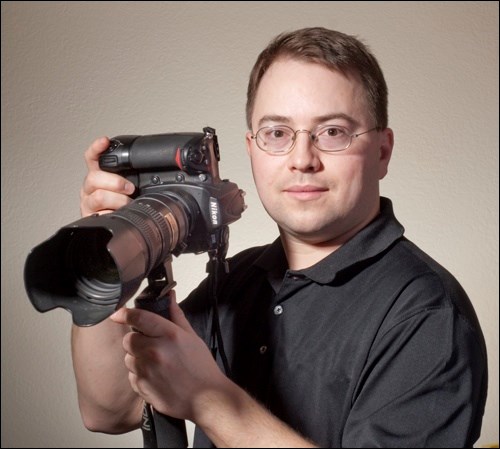For 99.99999 per cent of humanity (and maybe a few more 999s), Aug. 24 will not be a big deal. For professional photographers, it could be the second coming.
Or more like the fourth coming.
This date is the widely expected launch date of the next generation of Nikon professional camera bodies. Following the naming convention, it will be called the D4.
Every four years, like clockwork, Nikon releases a new generation of pro bodies. The release allows enough time for pro photographers to get their hands on the latest technology and know it inside and out before the next summer Olympics, which, in this case, is London 2012. Over the next several years, this technology will filter down into the consumer cameras that mere mortals purchase.
Nikon and Canon have been going at it hammer and tongs for over a decade now since the introduction of their first pro digital camera. For the longest time, Canon was in the lead, as evidenced by vast majority of distinctive white Canon lenses on the sidelines of major sporting events. But that changed four years ago.
Canon seriously fumbled the ball with its Canon 1D Mark III. Its autofocus was unreliable, especially in warmer temperatures. The people who buy these cameras make their living with them, and can't afford anything but top-notch performance, all the time. I sat in on a presentation at a Las Vegas photography convention by Ron Wyatt, one of the top sports photographers in the world. A Canon shooter for decades, he felt so skittish about the poor performance of the Canon 1D Mark III that he called up Nikon just a few weeks before going to the Beijing Olympics, which he would be shooting for a little company known as Kodak. Nikon fitted him out with, oh, about $120,000 worth of gear, including a number of Nikon D3 cameras, in time to capture some of the most iconic moments of the 2008 games.
The D3 not only had a really good autofocus, it also had something no one had ever dreamed of up until that point - the ability to shoot ISO 25,600. (1/256 the light of broad daylight) It allowed photographers to shoot with dramatically less light, or to speed up their shutter speed enormously. The camera I use, the D700, is essentially the same camera in a smaller form.
Soon you saw a lot more black Nikon lenses on the sidelines.
Then two years later, the updated D3, called the D3s, made it possible to shoot at ISO 102,400. That's less light than the human eye can perceive. It can literally shoot in the dark.
In so doing, Nikon also largely abandoned the megapixel game, where for years camera manufacturers kept making more megapixels, even though they really didn't make much better pictures. While it did make a 24 megapixel D3x, it focused on making better pixels, not more pixels.
The things I can do with the D700 today still amaze me. The third generation of Nikon pro bodies literally changed photography.
This is why I'm eagerly awaiting to see what the D4 has in store. It won't be cheap - I might have to sell a child to buy it. For the expected $5,500 price tag or so, it should hopefully wash my dishes and do my laundry, too, if I can ever afford it.
Ironically, all the current photo editing software and iPhone photo apps are chock full of settings that let your pictures like old, washed out, bad quality colour prints, heavily vignetted sepia tones or poor quality lenses. The more we can do amazing things with photography, it appears, the more they want it to stay the same.
- Brian Zinchuk is editor of Pipeline News. He can be reached at [email protected].




